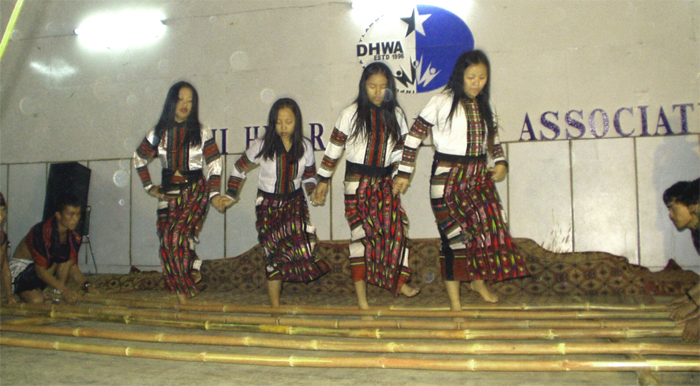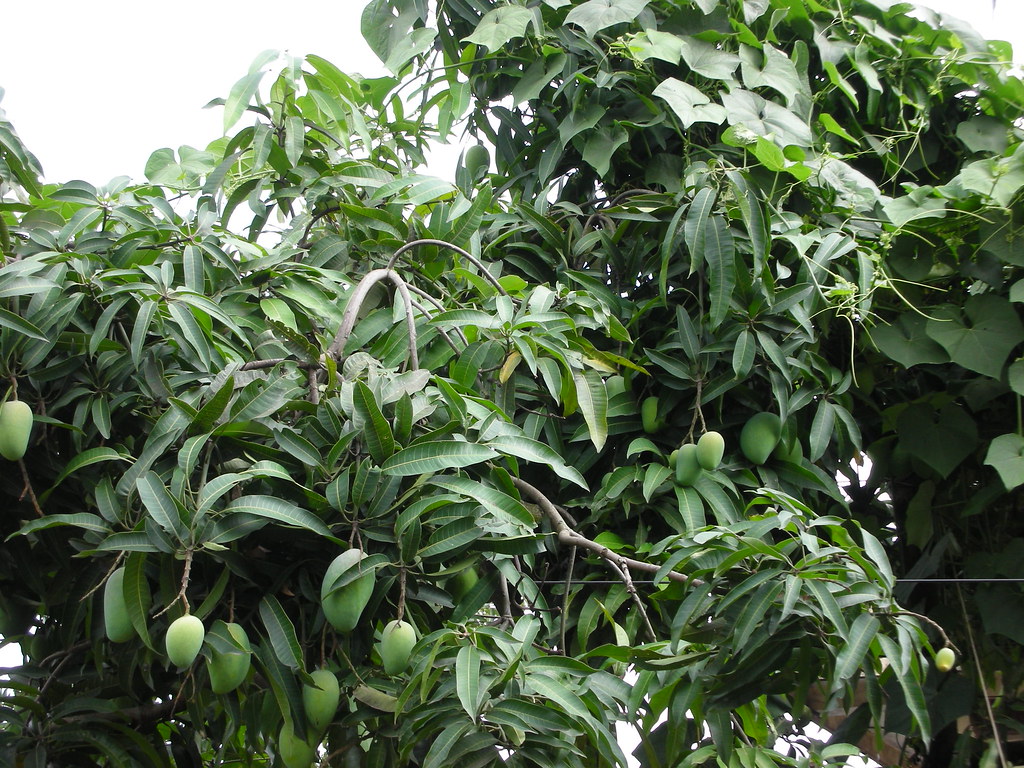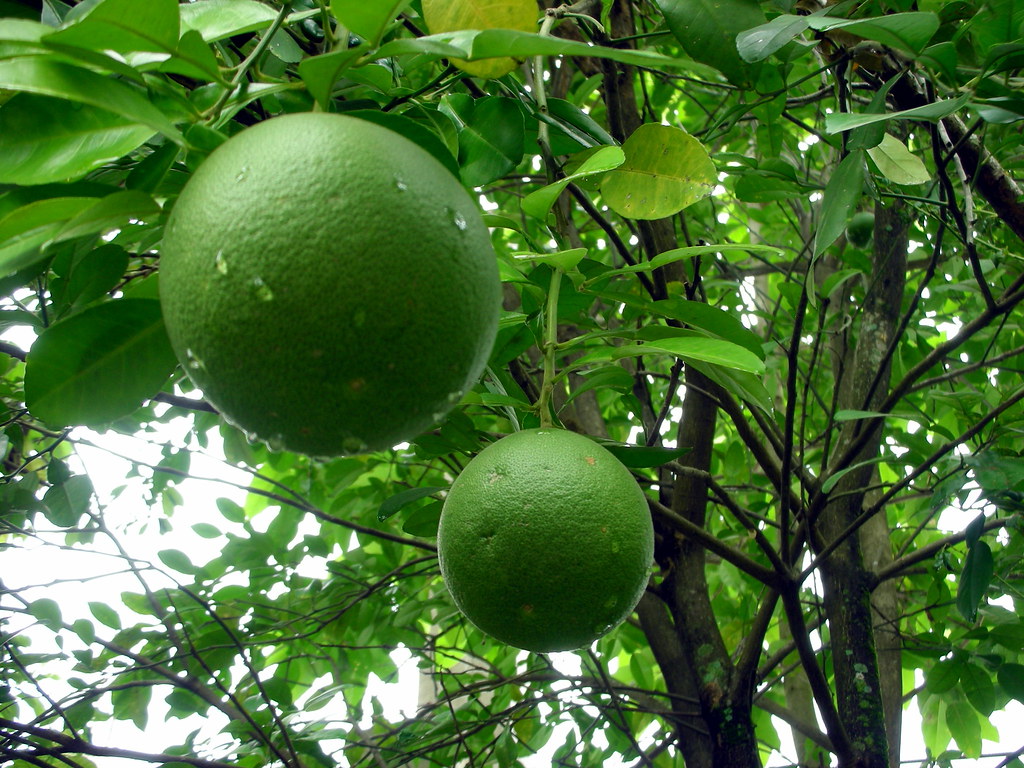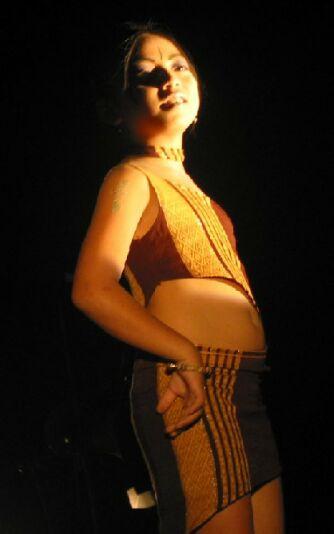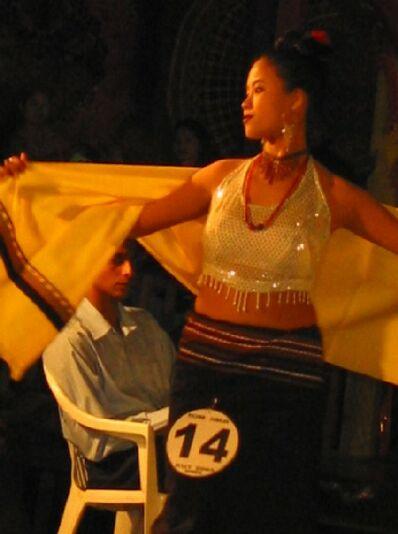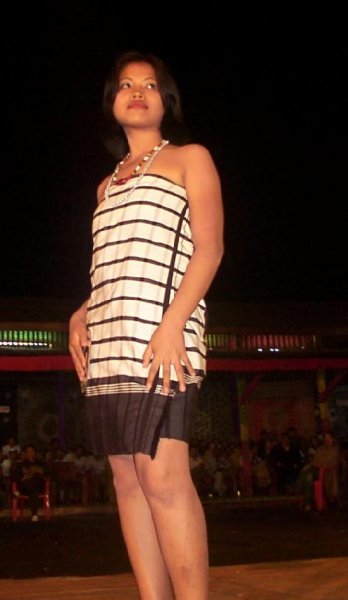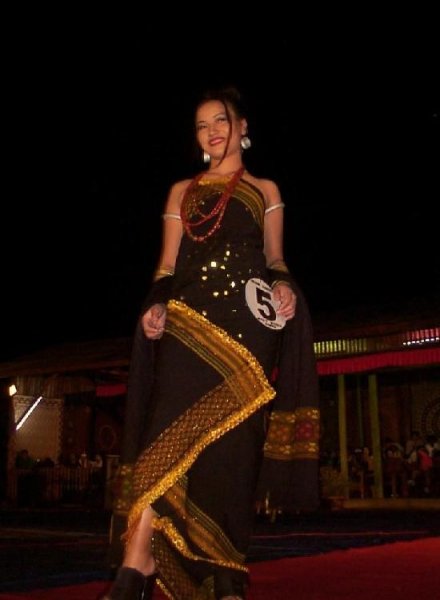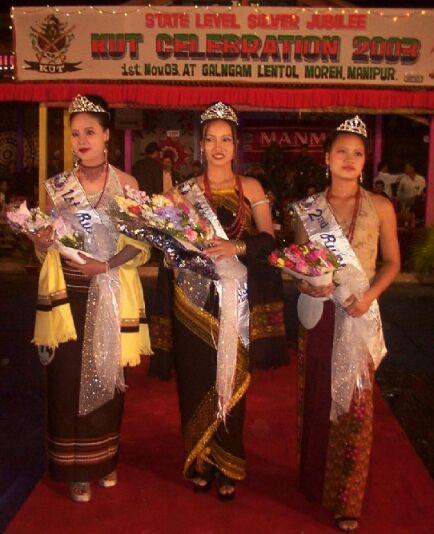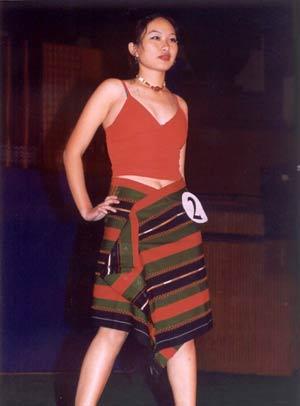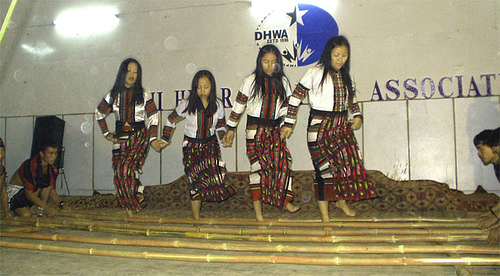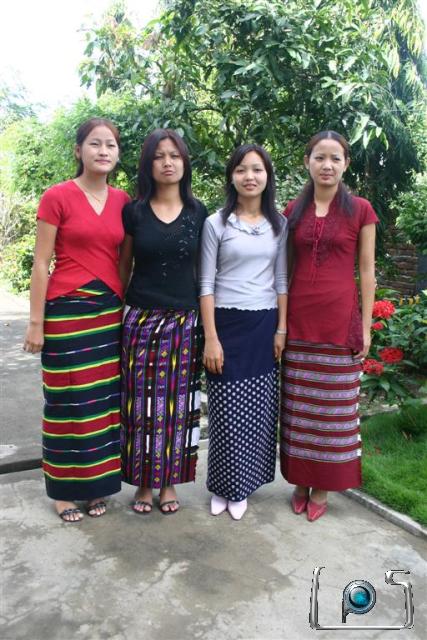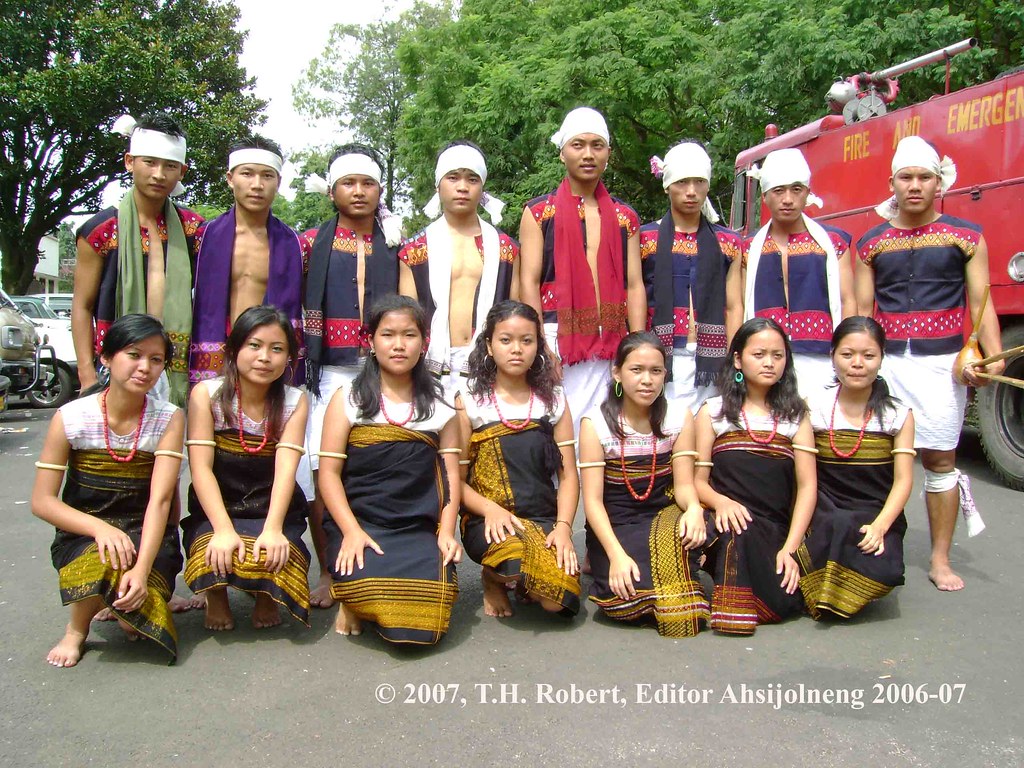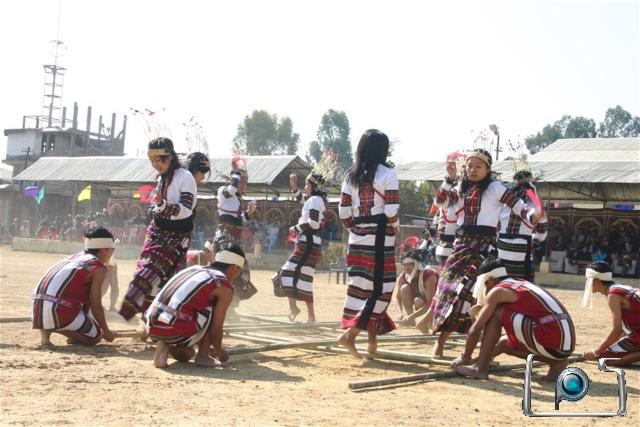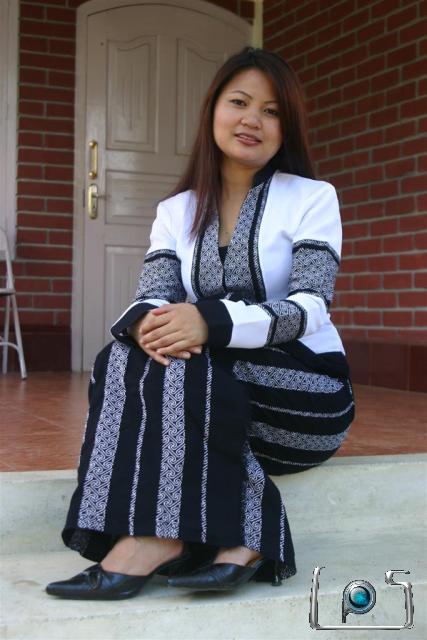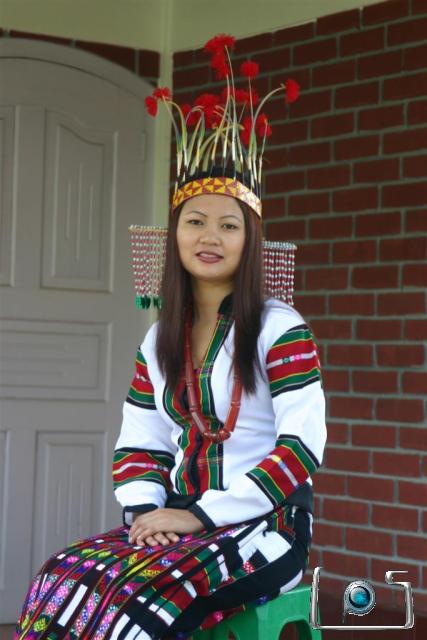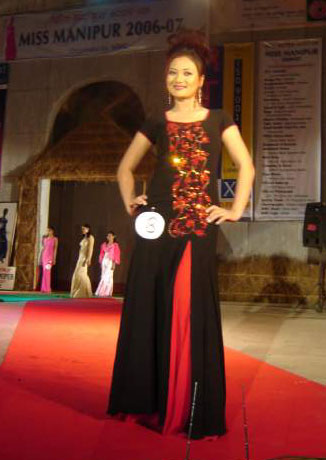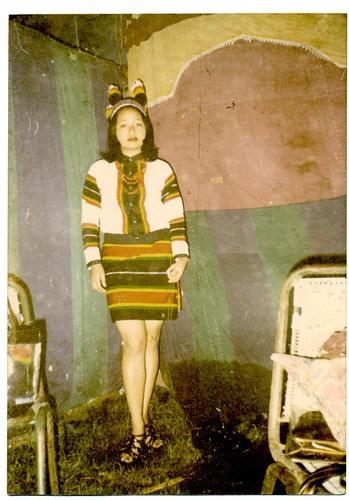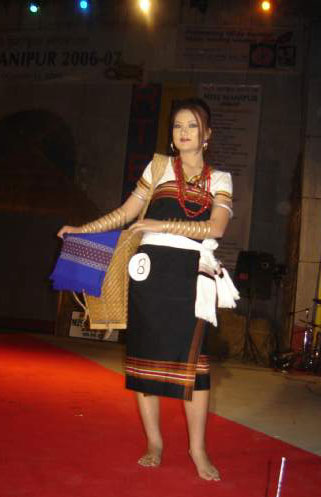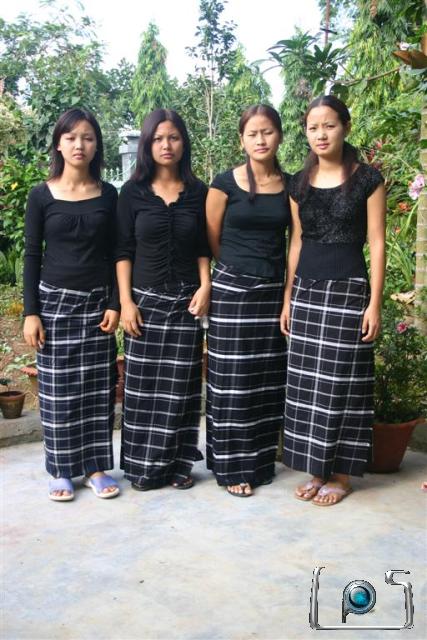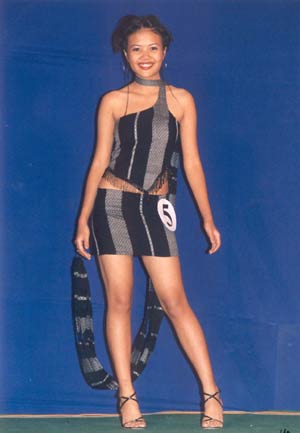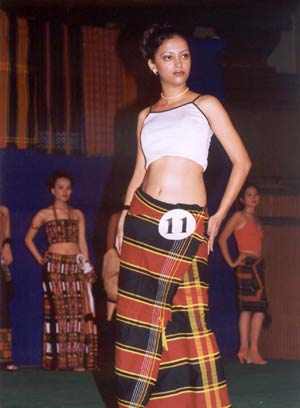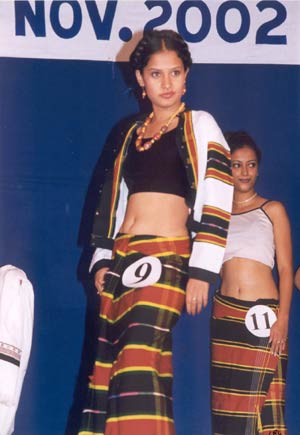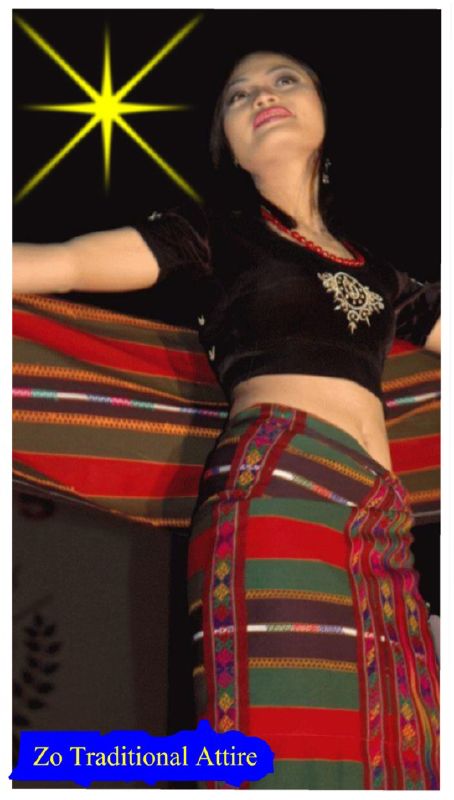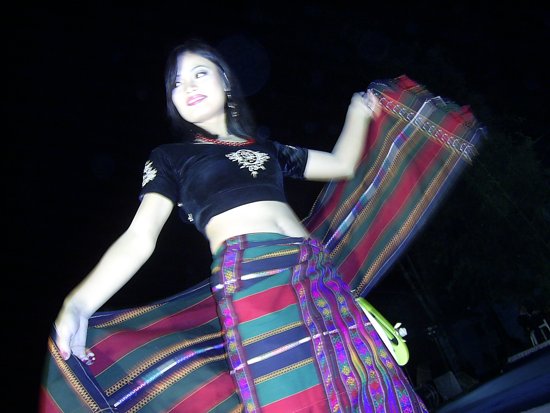HISTORICAL BACKGROUND OF THE VAIPHEI TRIBE
SOITINKHUP VAIPHEI
ABOUT THE AUTHOR
Mr. Soitinkhup Vaiphei (IPS). His main area of interest is research and has dedicated much of his time delving into the history of the Vaiphei tribe.
In view of the fact that most of us are not aware of our true genealogical background; and we are eager to know it; in view of the fact that our local elders who depend upon words of mouth from their memory bank could not present us with a properly fitted jigsaw puzzle solution, but only tend to create more confusion instead of solution, it therefore becomes necessary to apply modem method of historical research and
delve into this problem with a view to bring out the real and true picture about the people called “Vaiphei” and their cognate tribes.
The following are the very little information so far garnered about the historical background of the Vaiphei people by digging into the accounts of British records and various books of history relevant to this subject. Further unearthing of facts about the Vaiphei and the size and extent of this cognate tribe awaits in the days to come.
Vaiphei is a tribe recognized in the Constitution of India (Scheduled Tribes) order 1950 in the state of Manipur, Assam, Mizoram, Meghalaya. The Vaiphei has his own dialect. The Vaiphei is found in Manipur, Mizoram, Nagaland, Assam and Kabaw valley and Chin State of Myanmar. The Vaiphei, like any other Zo tribe maintained their genealogical tree. (Zo means members of Kuki-Chin-Mizo-Zomi-Hmar etc. group). Genealogy is a list of names of succeeding generations of a family or a tribe.
Vaiphei, not being the name of a human being, like ‘Sizang’, does not find a place in the genealogical tree of the people. This, therefore, is considered a nickname or an alias. According to verbal historical accounts passed down the generations, it is maintained that the nomenclature Vaiphei was derived from the name of the village where this people who came to be known as ‘the Vaipheis’ lived for a pretty long enough time, to acquire the name of this village as their group or tribal identity.
According to verbal genealogical tree maintained by the Vaiphei people in Manipur, the major groups trace their descend from Neilut and Vanglua as always spelled out in the “Hanla or Hat-la” which is a “cry of triumph or success” on killing prized animals like the “Zang-Sial”, (Gour) Tiger, Bear, Wild Boar, Deer (Sajuk) and Hornbill, or on occasions such as “Chawng”, “Bu-ai” and “Sa-ai” etc.
According to the verbal history as well as written account maintained by Zo historians of Sizang (Myanmar) such as Dr. Vum Ko Hau in his book — The Profile of a Burma Frontier man, Captain K.A. Khupzathang Suantak, in the book — The Genealogy of the Zo (Chin) Race of Burma, Vumson — Zo History and Chawngkunga of Aizawl in his book — Genealogical Tree of Mizo, Neilut and Vanglok (Vanglua) are placed as the second and fourth sons of Suantak, the brothei of Seaktak or Sehtha — (progenitor of the Thadou tribe) and Tohin — (the progenitor of Tohin line some of whom are found in Chin Hills.)
Now our subject is to find out: How and where a small section of the descendants of Suantak came to be known as Vaiphei; how, where and when did they developed the Vaiphei dialect and when and where the children of Suantak separated and who and where they are.
It is claimed by some Vaiphei elders that in course of their migration towards Manipur from Chin Hills, the Vaiphei people lived in a number of villages such as Tiddim or Tedim, Saizang, Lailou Tualzang etc. on the eastern bank of the Manipur river, and in villages such as Lousao, Khopual, Simzawl, Kaptel, Tuitaw, Laitui, Mualnuam, Phaiza, Khawzim (north of the Rih lake) Tungzang, Buanli etc. on western side of Manipur river and eastern side of the Tiau river; then after crossing over to the western bank of the Tiau ‘river from Buanli to Ngente then to Lungchuangtlang, Tuisa lui, Zoupi, Selam, Kawlbem, Khuainuai, Hiangtuinek, Khaudungsei, Lunglentlang, Chiahpui along the course of Tuivai then Umtal, then Maite and Thingmun
then Chongkhozo from where to other parts of Manipur and North Cachar Hilh As the movement was not in exodus, bu in small clannish groups at different tim ings and different speeds along various different routes, the account of all groups. are not available except that of a large group who came into significant notice o the British officers who recorded it.
The Vaipheis lived for varyine periods of time in the villages just men tioned above. This movement was causec by the tribal wars such as:
The Sunthla—Haka war, The Haka—Luse war, Sakta—Haka war, The Burmese—Haka war, The Zanniat+Khualsjm—Tlasun war. The Lusei Wars (North vs South, East vs West), Lusei—Zahau war, Kamhau—Shai war, Kamhau—Manipur war, Sukte—Luse war, Kamhau—Zahau war, Hualngou- Zahau—Sukte war, Tlasun+SunthlaZahau+Ngawn+Sakhileang vs Lophe (Louphei—a Sizang Suantak clan) war Sizang—Shan war. These tribal wars whici raged the entire Chin Hills, present Mizorain, Chittagong Hill tracts and Hi1J areas of Tripura, Cachar and Southern part of Manipur created a lot of mass move ment of all the inhabitants of the area between 1SOOAD to 1890 AD.
The Phaiza Village Theory: It is believed that while the group of people who came to be known as the “Vaiphei” were living together with members of other tribes in village Phaiza, it is said that the population was so big that the village expanded breadth wise along the horizontal saddle of the hill ridge that from this the village acquired the nickname “Khaw—Vai—phei” in which the Thadou people also claim to had lived according to a Thadou song composed by Mangkhotin-gou, Chief of sangnao. The song with its free English rendering is given:
(a) Kachunnu leh kavang khuo lung-hiem tante (My mother and my Villagers must have grown worried). Lailu tawh tuonglam zawi-lam theipuonte (Un aware that lam trudging along with hunted enemy’s head). Laisimlu tawh Khaw Vaiphei thil injawt-ing (Walking on with enemy’s head towards destination Khaw - Vaiphei) Suo-muol lung-ngui tin daijing kathuoh sah (Suffered great worries at Village gate for my sake).
(b) Jolpi—te La : Siel lum leh in Khaw- Vaipheijang-ma-suon-ing (Sporting a shield walking towards Khaw-Vaiphei) Ka leidou mangpa chunga kachuang e (I triumph over my great earthly foe)
(c) Vaiphei Hanla: “Kathange, Kathange, Kachun leh kazua’n, Thangnam chembang eichawi e, Namtin Khaw Vaiphei lai a, Guallai lawi ang kathang e”.
It is said that after all other tribes further moved on i.e. migrated ,the people who continued to live on in village Phaiza alias Khaw-Vaiphei and migrated last of all came to be identified as the “Vaipheis.”
The Liankhama Sailo Village Theory:
Another version says that the Suantak people who later came to be known as “Vaiphei” lived with other people in the village of Liankhama Sailo. One day one Pawi member of that village by the name of Thangvuka killed one of these Suantak people and ate the heart of the man he killed in front of his relatives.
This infuriated the Suantak people so much that they chased the Pawi all over the village with an intent to kill and avenge themselves. Sensing the danger to his life the Pawi darted inside the Chief’s house and hugged the prime pillar. According to Zo custom such a criminal who seek refuge under the protection of the Chief is safe from any harm as he comes under the protection of the Chief by becoming the slave of the Chief. This is known in Lusei as Chemsen Bawi.
Realizing the implication of the custom the enraged people who failed to take revenge on the Pawi felt no more desirable to continue living together in that village side by side with the hated killer, migrated from that village en-masse. This action is expressed in Lushai as “an Vaiin-an-phei tawh a”. (They left in body or exodus). Thence wherever these people live, they came to be known as “Vaiphei”. It may be noted that according to the genealo’ of the Sailo clan Liankhama Sailo lived during the period from 1850 to 1875.
According to the 1981 census Report of Manipur the population of the Vaiphei speaking people was only about 25,000. Malthusian Theory says that population doubles every twenty—five years under normal situations devoid of war or natural calamities. Calculating on the basis of this law thD population of Vaiphei speaking people is barely two persons in 1656
AD.
Year Population Year Pop
2006 50,000(pro) 1831 366
1981 25,000 1806 182
1956 12,500 1781 91
1931 6,250 1756 45
1906 3,125 1731 22
1881 1,562 1706 11
1856 731 1681 5
1850 400 1656 2
* Zero population in 1631
As the nomenclature ‘Vaiphei’ was an imposed name either under the Phaiza Theory or under Liankhama Sailo village incident theory, the population calculation need not go down to the year when there was only one person.
As the probable date of the Phaiza village could not be established, right now there is no means to find out the population of the people who lived and acquired the name “Vaiphei” from village Phaiza. Since Liankhama Sailo was believed to had lived between 1850-1875 (Giving one generation an average of 25 years) and presuming that the Liankhama Sailo Village incident theory was correct, it may be surmised that the Suantak people who later acquired the name ‘Vaiphei’ could have lived there in that village several years ahead of the incident (the exact date of occurrence was not given) and could have been already using the Vaiphei dialect which was derived from the Lushei language, and their total population in 1850 AD could be around 400 persons.
The Dialect: Taking into account the fact that 80% of the vocabulary of the Vaiphei dialect (which is similar to the Ralte dialect) is common to the Lusei word except that the Vaiphei does not like to make effort to pronounce ‘R’ by rolling his tongue or pronounce ‘Tl’ and ‘ml, etc combinations by doing a little bit of self exertion. The remaining 20% of words are from Thadou, Hmar, Paite, Yo etc. In view of the above 80% presence of Lusei — Duhlian vocabulary in the Vaiphei dialect coupled with the presence of Duhlian community within the Vaiphei fold, using the Vaiphei dialect, it is believed that Vaiphei dialect must have developed only among the Lusei Duhlian speaking people during their sojourn in areas east of the Var or Run (Manipur River) or in areas between the Var and the Tiau or after crossing the Tiau.
How and where seperated: According to La! Biak Thanga as well as Vum Ko Hau, the Zo people including the Sizang migrated from the Kale valley to the Chin Hills around 1374 AD under the pressure of a cruel Shan King coupled with a severe famine. According to the Paite ver sion, by 16th century the Zo settlement at Ciimnuai became overcrowded with popu lation. Some of the Paite who moved south or down the hillside came to be callec “Sukte”. They found their home a Mualbem.
The Suantak, Thado and Yo said they lived together for many years till the Suantak and Thado quarreled. The reasor for their quarrel was the tail of a Deer and a flying Squirrel. After the quarrel a sec tion of the Suantak moved near the salt- spring and thus they received an alia ‘Sizang’ meaning ‘Salt-spring plains’. Another section of the Suantak moved to Tuitawng on the border of the plains anc hills. These people afterwards came to be known as the Vaipheis. The Thadou and Yo (Zou) moved north of Ciimnua. Th Thadou found village Phaileng and Y (Zou) found village Gam-ngai. It may be noted that the ‘Nuai-mangpa’ in Thadou legend could be a reference to the Chief of Ciim-Nuai village. Ciimnuai is located between Tedim and Saizang villages.
Before the quarrel these people called by the group name ‘Paite’ (Thadou, Suantak, Sukte etc) who are non-Lusei. non -Pawis lived together as long as 200 (two hundred) years. So the dispersal from Ciim-nuai could be between 1500 to 1600+200=betweefl 1700— 1800 AD. It is believed that the spearhead group of Vaipheis who were in the company of the Haukips could have entered Manipur before 1830 AD as evidenced by the fact that Zakhothang Suantak and Pumkhozam Neihsial were already in Chandrakirti Maharaja’s army in 1857 – Manipur Kamhau war.
Vaiphei nomenclature and Vaiphei Dialect which acquired earlier and when and where? It is strongly believed that Vaiphei must have acquired this dialect after separation from cousins of Sizang. Probably only after the Lushai language was popularized by Lallula Sailo between 1750-1803. They (Vaiphei) must have lived close by Lushai speaking village where from they started developing the Vaiphei dialect which is not 100 % pure Lushai; or they could have been speaking the Sizang dialect at the time of their separation from their cousins of Sizang, walked into a Lusei-Duhlian village, lived there for about a pretty long number of years during which they started speaking the Duhlian dialect but refused to take the trouble of overcoming difficult phonetic sounds and continued his easy Sizang pronunciation where Lusei becomes difficult.
As for the name ‘Vaiphei’ it is possible that it was acquired from village Phaiza alias ‘Khaw-Vai-Phei’ and afterwards the language developed on coming in contact with the Lusei-Duhlian people. Or after they parted with the Sizang, they walked into a Lusei-Duhlian speaking village, developed the ‘Vaiphei’ dialect then the Thangvuka incident compelled them out of the village and thereafter acquired the ‘Vaiphei’ name. The people of Sizang remembered and recorded the migration of the last remnants of their cousin Vaiphei people from Tuizang. The Vaipheis who earlier lived in Tungzang (1867), Suangkong and Tuitwang (1876) came back to this village (Tuizang) which the British destroyed and constructed Stockade No.3 (near Fort White) in 1888-89 as punishment to the Vaiphei for helping the Sizang (Siyins) in their war against the British in 1888-89. Since then there was no more Vaiphei settlement in Sizang. The occupants of this last Vaiphei village in Sizang could be those war-veterans of 1888-89 whose list of names a spelled out by Khuplian Suantak was recorded by Vumkhohau.
Vaiphei Veterans (Extracted from — The Profile of a Bunna Frontierman
— by Vum KoHau). The following Vaiphei cousins of the Siyin Thuantaks (Sizang Suantak) from Tuitong, Suangkang and Tung Zang migrated to the Siyin Valley when they were driven away by their local enemies and lived together with the Lopheis and Khuasaks and some Thuklais in the Valley below Khuasak. They made a pact with the Siyins by the customary tradition of touching one another with buffalo tails, to help each other in time of war. The Vaipheis true to their allegiance assisted the Siyins in their war against the British. The list was as told to me by my uncle, Chief Khup Lian of Lophei on the 4th of July, 1960 : Mang Thual, a commanding Vaiphei leader, Mangpi Lam and Kai Lal. The above three were the heroic leaders. Others included Minh Pau, Tong han, Thang Kop, Pau tho, Thawng Khaw Lun, Vungh Za Pau, Pa La!, Thang Nei Khup, Tawngpi Mang, Vung Lian, Thang Kho Lian, Nei Pau, Kai Lal, Pum Kam,
Pa Vel, Pi Mang, Vungh Kam, Awn Khup, Mangnei Khai, Liii Khup, Khawltin Thang, Pau Khaw Lun, Nei Thang, Thang Bawng, Pa Sum, Hau Zang, Khawl Tim,
Thaul Za Thang, Lun Za Tawng and Mat Kham.
Carey and Tuck in their book The Chin Hills commented : Besides these villages (i.e. Khuasalk, Thuklai, Sakhileng, Buanman) there was one called Tuiyan (Tuizang) near the site of our No.3 Stockade, inhabited by the last remnants of the Vaipe tribe. After their village was destroyed the inhabitants no longer lingered, but migrated North and over our borders, where theyjoined theirtribesmen, who had long before moved north out of the Siyin and Sokte country.
Thazing-Lam: The verbal histoty of the Vaiphei maintained that during their sojourn at a certain place between Sizang and Manipur, they had a celebration probably a “Kut” in the Vaiphei lunar month of Thazing wherein they composed Thazing Lam. Any celebration is virtually a feast. This feast was said to had lasted for a number of months at a stretch that it came to an end only when a bird flying over them incidentally dropped the ear of the paddy among the feasting Vaiphei that it brought them to their senses about the passage of time. From this instance it is necessaty to think whether Vaiphei people are pleasure loving or culture loving people.
Probable place where Thazing Lam was held : According to the Vaiphei Lunar calendar, the month Thazing coincides with the month of August of the Gregorian calendar. Normally the paddy plant bears its ear of corn or paddy in the month of November. So, it can be deduced that the stupefying feast lasted for a continuous period of4 (four) months. This kind of a feast which goes on so happily to the extent of loss of the count of time can hap. pen only under a sense of fool-proof security and complete safety in those days of tribal wars. So this could be possible only inside the fortress village of the Vaiphe found on the Lunglen Hills; as described by Carey and Tuck as follows: “The Vaipe tribe, which has now entirely disappeared from the Chin Hills, has left traces offortifications in the north which will last for many years :o come. Perched on the summit of precipitous peaks they built their villages, and f the approaches were not almost perpendicular they proceeded so to cut away and blockihepath thatfriend and foe aliAe could only ascend to the heavily- stockaded gates in single file ‘
“On the summit of Lunglen peak is found the remains of an ancient Vaipe village, which was defended in a most extraordinary manner by boulders and sungars. Finally, just in front of the ford- fled gate, the rock had been cut perpendicular for 10 feet. which necessitated the use of a ladder before it could be scaled ‘
From the above descriptions of the general nature of fortification given to the Vaiphei villages in contrast with the bamboo or split wooden stockades of other sister tribes sited not necessarily on the summits of precipitous peaks indicate the outstanding, inherent military mind of the Vaipheis which once again was demonstrated recently. It is also clearly believed that the popular Vaiphei saying “Than gniang dawilawk chempai kua, suangkawt a awk gawi gawi” was a real incident which occurred in one of these villages of his own.
How Lunglen Hill got its name:
Verbal history in Mizoram say that Lunglen Hill acquired its name only after the Vaiphei left their settlement on this hill when they moved further up into Manipur. It says that even at the time the Vaiphei villages were sitting on this hill range, it (the hill) was still without a name. After the Vaiphei completely left the hill their neighbouring villagers who strongly felt that they missed the lovely Vaipheis in a big way gave this name to the hill. Location of Lunglen-Hili - “In the north the most conspicuous peaks are Lung’en, the western point of the Chin - Mantpur boundary 6531 feet; ...“ - The Chin Hills.
Vaikhotlang/Sialkal Tlang:
Between the Tuisha and Tiao rivers along the northern part of Chin Hills- Mizoram boundary, there is a hill range known as Vaikhotlang-dung and also a place known as Vaikhawhmun. This location is in the middle of vast area of hilly tract inhabited by the Zo people on all sides such as Southern Manipur in the north, the Chin- Hills in the east and south-east, the Mizorarn in the west and south-west. This hilly countly surrounded by Zo tribals on all sides is no place for any Vai (‘Mayang’ in Meetei -foreigner especially Aryan breed) to settle down at any point of time to give the Vai name to this hill.
The place is around the Sialkaltlang and Lunglen-hill in Mizoram where the Vaiphei people made it their home for a considerable number of years. Some people therefore, believe that Vaikhawtlang, Vaikhaw-hmun must have derived these names from ‘Vaiphei’ who resided in this area for a pretty good number of years.
Vaiphei - in other dialectical groups : Although the greater bulk of Vaiphei population speaking Vaiphei dialect is found mostly in Manipur, people who claim to be members of the Vaiphei community but speaking not necessarily Vaiphei dialect are found in varying numbers inside communities speaking dialects of Lushai-Duhlian, Hmar, Paithe or Tedim, Thadou etc.
It may also be mentioned that Rokunga — the greatest poet who had composed not less than 120 songs in LushaiDuhlian language, Kappu who composed a number of Christian worship songs in Hmar language, Hrangbana, who set up the Hrangbana college in Aizawl and now runs the Maruti vehicle agency in Aizawl, to mention a few, are outstanding members of the Vaiphei community.
The Cognate Tribes : As no human being exists without having blood relations left and right, it may be mentioned again for our own information, by way of promotion of awareness that the members of the Vaiphei community consist of a small faction of the descendents of Suantak who is/was the brother of Tohin and Sektak or Sehtha (the progenitor of Thadou tribe). Another faction of the descendants of Suantak are the children of Zahmuaka, (also known as “Lalchi”), a branch of the descendants of Ngengu,(the eldest son of Suantak) are speaking Lushai-Duhlian language.
Other factions such as those Siyins or Sizangs in Chin Hills are now speaking the Tedim dialect. The Tungnung Tunglut, Tungdim or Lhungdim, Baite, Phiamphu are speaking either Zou, Paite or Thadou. There are also some Suantak sub-tribes or clans who scatter among dif ferent Zo dialectical groups. In short, we may put it this way that the descendants of Suantak are found speaking five major dialects such as Vaiphei, Paite, Hmar, Thadou and the Lushal -Duhlian language. Another interesting point is that while they are fully aware about their genealogical line of Suantak descent they are identified by three distinct aliases, that is, originally a section of Neilut and a section of Vanglua descent are known as Vaipheis.
A section of Ngengu descent i.e. the descendants of Zakmuaka of Ngengu line such as Zadeng, Palian, Thangluah, Thangur (progenitor of Sailo) Rivung, Rokhum together with tribes like Hualngo, Colney, Pachuau etc. came to be known as Lushei. A section of Vanglok (Vanglua i.e. Thuklai, Limkhai to which Vumkhohau belongs) Daitong (to which Vumson, author of ‘Zo History’ belongs) are known as Siyin (Sizang Thuantak or Suantak) in Chin Hills. The Vaiphei has two important clothes such as Puandum and Khiangkawi.
Puandum The name itself is Lusei-Duhlian word meaning the Black- cloth. The Lusei and Vaiphei version oF Puandum are the same except that where the Lusei puts a green stripe Vaiphei puts yellow, and still retains the Lusei name “Puandum” which in Vaiphei dialect really, means “Blue cloth” because in Vaiphei dialect “Dum” means blue and “Vawm”
black.
Khiangkawi: This is another distinct and conspicuous cloth of the Vaiphej The Sizang Suantak also has this cloth They call it “Chiang-Kawi Puan” because of the zigzag (/\/\/\/)pattern it has as its design. The Vaiphei must have mispronounced it as “Khiangkawi” which in fct produces no meaning as “Chiangkawi”. The Sizang use it as male-cloth.
In fine, it may be added that Vaiphei, like Siyin or Sizang, is a nickname given to a small group of people who are. members of the Great Suantak Family; and it is because of this fact that all people who trace their pedigree to the Suantak trunk find a home in the recognized tribe
Vaiphei; and Suantak isa member of the Zo family.
(source - zillai millenium magazine)
 naupan lai a pat a pa belam ching a, hung sei lian, sepai galhat minthang a hung hi nung ah,
naupan lai a pat a pa belam ching a, hung sei lian, sepai galhat minthang a hung hi nung ah, 









